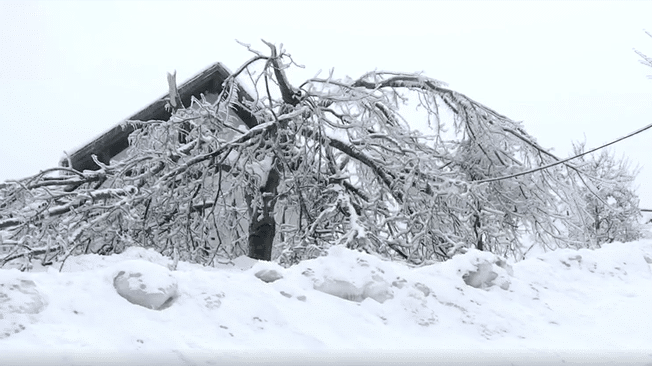What’s in today’s article?
- Why in News?
- Background (About the study published in Science.org)
- What is a Polar Vortex?
- What are the major findings of the Study?
Why in news?
- A deadly blizzard (snowstorm) has gripped the United States & Canada, leading to multiple deaths and complete disruption of normal life.
- Scientists have once again started to discuss if the rising temperatures of the Arctic are responsible for extreme cold conditions in some of the areas of the Northern Hemisphere.
Background
- Recently, a study was published in Science.org, revealing that the rapid warming of the Arctic might be allowing frigid air in the region to move southward more frequently than ever before.
- However, scientists said they need more data to arrive at a consensus about the claim.
- The study largely focused on something called the polar vortex, which is a mass of cold, low-pressure air that consistently hovers over the Arctic region.
What is a Polar Vortex?
Image Caption: Polar Vortex Phenomenon
- The polar vortex is a large area of low pressure and cold air surrounding both of the Earth’s poles.
- It ALWAYS exists near the poles, but weakens in summer and strengthens in winter.
- The term “vortex” refers to the anti-clockwise flow of air that helps keep the colder air near the Poles.
- Many times, during winter in the northern hemisphere, the polar vortex will expand, sending cold air southward with the jet stream.
- Jet stream is the area of fast-moving air high in the atmosphere that surrounds the polar vortex.
- This occurs fairly regularly during wintertime and is often associated with large outbreaks of Arctic air in the United States & Canada.
- Portions of Europe and Asia also experience cold surges connected to the polar vortex.
Is it a new climatic phenomenon?
- Polar vortexes are not something new.
- The term “polar vortex” has only recently been popularized, bringing attention to a weather feature that has always been present.
- By itself, the only danger to humans is the magnitude of how cold temperatures will get when the polar vortex expands, sending Arctic air southward into areas that are not typically that cold.
What are the major Findings of the Study?
- In the study published in the Science.org, the researchers found that the expansion of the polar vortex has been occurring more than twice as often in recent years and the reason for it is the rapidly warming Arctic.
- With the help of observational analysis and numerical modelling, the study came to the following conclusion.
- The melting sea ice in Barents and Kara seas north of Russia and Scandinavia and increasing Siberian snowfall create larger and more energetic atmospheric waves.
- These waves ultimately stretch the polar vortex, causing extreme winter weather in the US and other places.
Q1) What causes a polar vortex?
The waxing and waning of the polar vortex is driven by the movement of mass and the transfer of heat in the polar region. In the autumn, the circumpolar winds increase in speed and the polar vortex rises into the stratosphere. The result is that the polar air forms a coherent rotating air mass: the polar vortex.
Q2) How is polar vortex related to climate change?
While the polar vortex is well documented, its behavior has become more extreme as a result of climate change. Warming of the Earth has led to the loss of Arctic sea ice, transforming a highly reflective icy surface to a dark absorptive surface.
Source: Rapidly warming Arctic linked to extreme cold weather in the US: What a new study says | Indian Express | Weather.gov
Last updated on January, 2026
→ Check out the latest UPSC Syllabus 2026 here.
→ Join Vajiram & Ravi’s Interview Guidance Programme for expert help to crack your final UPSC stage.
→ UPSC Mains Result 2025 is now out.
→ UPSC Notification 2026 is scheduled to be released on January 14, 2026.
→ UPSC Calendar 2026 is released on 15th May, 2025.
→ UPSC Prelims 2026 will be conducted on 24th May, 2026 & UPSC Mains 2026 will be conducted on 21st August 2026.
→ The UPSC Selection Process is of 3 stages-Prelims, Mains and Interview.
→ UPSC Result 2024 is released with latest UPSC Marksheet 2024. Check Now!
→ UPSC Toppers List 2024 is released now. Shakti Dubey is UPSC AIR 1 2024 Topper.
→ Also check Best IAS Coaching in Delhi

















